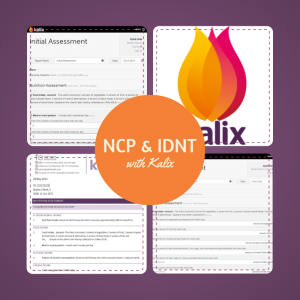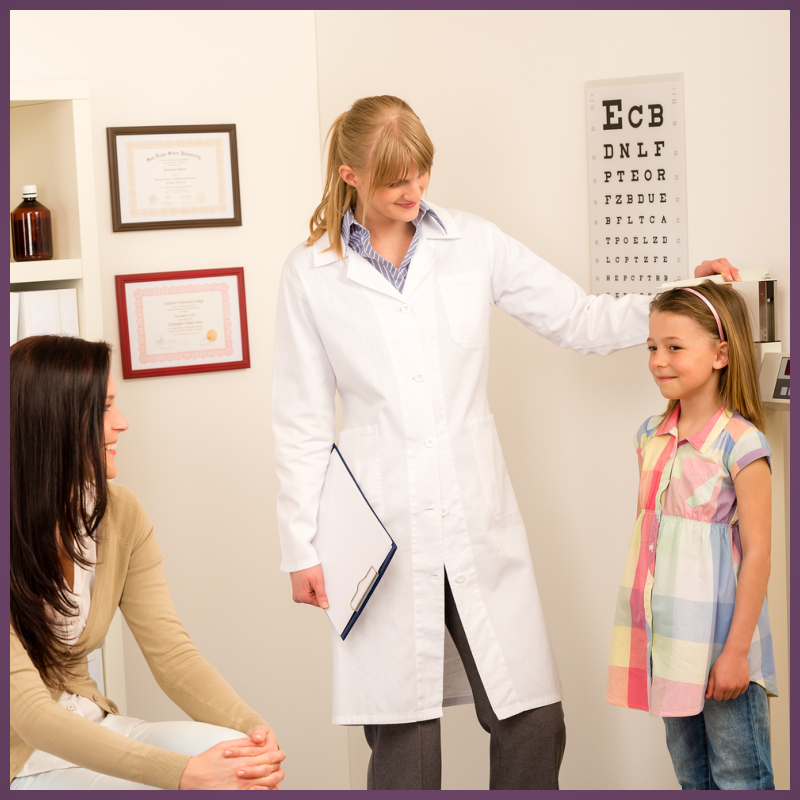 Welcome to Part 2 of my journey through the of IDNT and the Nutrition Care Process. I hope you enjoyed part 1 Nutrition Assessment, click here to read.
Welcome to Part 2 of my journey through the of IDNT and the Nutrition Care Process. I hope you enjoyed part 1 Nutrition Assessment, click here to read.
The Nutrition Care Process is the systematic approach to providing high-quality nutrition care developed the Academy of Nutrition & Dietetics. Kalix’s electronic documentation feature was built on the back of the nutrition care process. Electronic documentation systems like Kalix make charting a lot quicker. They can even limit the need to learn and memorize standardized terminology.
It’s time for the next step in the Nutrition Care Process (NCP), and this is the step that receives the most attention-Nutrition Diagnosis. The attention hogging Nutrition Diagnosis identifies the specific nutrition problem that we (the Dietitian) are responsible for treating and (ideally) resolving. We resolve this nutrition problem through our nutrition intervention.
So, I might have been a bit harsh towards poor Nutrition Diagnosis. Calling him an attention hog is bit unfair, it’s not his fault after all.
The fact is, most of the training on the Nutrition Care Process that I’ve attended (both in Australia and the US) focuses primarily on the Nutrition Diagnosis.
Sure, there are arguably good reasons for this;
The ability to create a Nutrition Diagnosis requires a shift in thinking.
The idea of using and identifying a Nutrition Diagnosis over a medical one may appear to be new, I argue it is something we, Dietitians have always done.
In our work as Dietitians, the focus of our thinking (as well as our documentation) is often on our client’s (or patient’s) medical diagnosis e.g. type II diabetes, stage 3 renal disease, and hypertension.
The Nutrition Care Process encourages us to move our thinking towards our area of specialty-Nutrition. Hence, the focus of the Nutrition Care Process is the nutrition problem (i.e., the Nutrition Diagnosis) that the Dietitian is responsible for treating independently. It is still important to consider the client’s medical diagnosis (obviously), but focus your thinking (and documentation) around the nutrition problem.
As Dietitians, it is not our job to diagnose medical conditions. Sure, through our nutritional interventions we help to treat/management them, but Dietitians do not diagnose medical conditions.
An example
A client with type II diabetes is referred to see you, a Dietitian for advice on modifying his diet. His referring practitioner wants him to achieve improved blood glucose control.
You know as a Dietitian, many things may be affecting this client’s blood glucose control, not just his diet. But you take a diet history, and you can see that there is definitely room for improvement. As you assess this client’s diet history, you see that he eats a very large, carbohydrate-heavy evening meal, he skips breakfast and lunch just consists of a white bread sandwich with jam.
What will your nutrition intervention focus on (write it down)?
Yes your right! Your interventions for this client are focused on establishing a consistent carbohydrate intake throughout the day, limiting heavy carbohydrate meals and choosing mostly low GI foods.
Now what is the Nutrition Diagnosis?
Considering, the Nutrition Diagnosis is the specific nutrition problem that you (the Dietitian) is responsible for treating and (ideally) resolving, what is the Nutrition Diagnosis for the above case?
Think: the nutrition problem (Nutrition Diagnosis) is what our interventions aim to solve.
Suggested Nutrition Diagnosis
• Inconsistent carbohydrate intake -a diagnosis for an intervention that is aimed at establishing consistent carbohydrate intake.
• Excessive carbohydrate intake– a diagnosis for an intervention that is aimed at limiting heavy carbohydrate meals.
• Less than optimal intake of types of carbohydrate-a diagnosis for an intervention that is targetted at choosing mostly low GI foods.
The Nutrition Diagnosis is not
- Type II Diabetes –this is the medical diagnosis, not the nutrition problem.
- Altered nutrition-related laboratory values– you can select this diagnosis, but remember, many factors may be affecting this client’s blood glucose control, not just his diet. Diet/intake related Nutrition Diagnosis are always preferable.
Even though the referring practitioner wants the client to improve his blood glucose control, the goal of your intervention is to achieve dietary modifications.
The IDNT manual (2013) explains;
“the [dietitian] identifies and labels a specific nutrition diagnosis (problem) that… he or she is responsible for treating independently (e.g., excessive carbohydrate intake). With nutrition intervention, the nutrition diagnosis ideally resolves.
In contrast, a medical diagnosis describes a disease or pathology of organs or body systems (e.g., diabetes)… [dietitians] do not identify medical diagnoses; they diagnose phenomena in the nutrition domain.”
This is the shift in thinking.
Some argue that the ability for Dietitians to identify a Nutrition Diagnosis (instead of a medical one) is new. As I said earlier, I believe it is something we Dietitians have always done.
The format that the Nutrition Diagnosis is written is in, is a bit different. But as Dietitians we have always been being able to identify the particular nutrition issue/s our clients have. These nutrition issues are the focus of our interventions.
How would a Dietitian know that a particular client needs to limit their heavy carbohydrate meals if they were not aware that the Nutrition Diagnosis (problem) is Excessive Carbohydrate Intake?
The PES Statement
So onto the PES Statement (this will be discussed in detail next blog):
The Nutrition Diagnosis is summarized into a structured sentence called the nutrition diagnosis statement or PES statement. The PES statement links the Nutrition Assessment to the Nutrition Intervention to set realistic and measurable goals/outcomes from the nutrition care.
The PES statement:
(P) the nutritional problem (the selected Nutrition Diagnosis), related to (E) etiology, as evidenced by (S) signs and symptoms.
So why I call the Nutrition Diagnosis, an attention hog that it is often people’s primary focus when learning the Nutrition Care Process. However, the Nutrition Diagnosis should not be considered in isolation. Think of it concurrently with the other stages of the Nutrition Care Process (Assessment, Intervention and Monitoring/Evaluation).
Nutrition Assessment
As I discussed in the last blog, during the Nutrition Assessment, the Dietitian gains a lot of information specifically relating to the Nutrition Diagnosis.
Remember that I mentioned Nutrition Care Indicators last blog (assessment data that are used to identify a client’s Nutrition Diagnosis and its etiology and signs/symptoms.) This where you get the info needed to form your PES statement.
Nutrition Intervention
As discussed in this article, the Nutrition Intervention should be aimed at resolving the Nutrition Diagnosis; hence the two are directly linked (more on this next blog).
Monitoring and Evaluation
During this stage Dietitians monitor the client’s progress towards resolving the Nutrition Diagnosis. The factors that are monitored to measure the client’s the progress are also the Nutrition Care Indicators- the E and S from the PES statement (more on this in future blogs.)
Tips:
- Nutrition Diagnosis, is not a medical diagnosis.
- Nutrition Diagnosis, describes the nutrition problem that the intervention aims to solve.
- Diet and intake related Nutrition Diagnosis are preferable over medical or behavioral based ones.
- Do not think of the Nutrition Diagnosis in isolation. Think of it concurrently with the other stages of the Nutrition Care Process (Assessment, Intervention and Monitoring/Evaluation).
Next blog I will explore the PES Statement in more detail.







